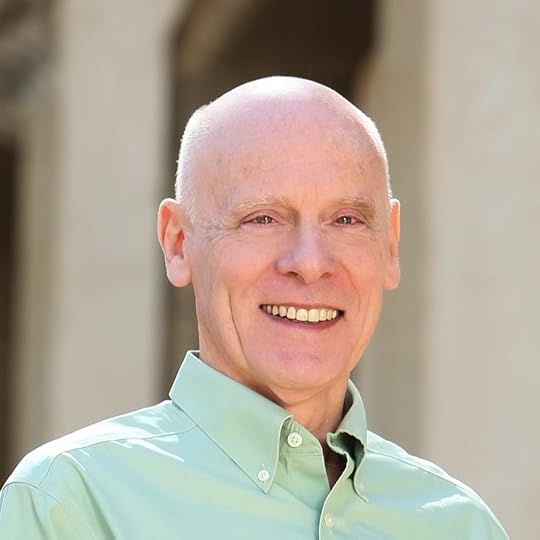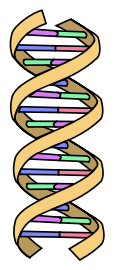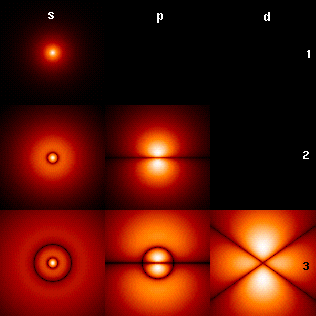Michael J. Behe's Blog, page 510
March 14, 2019
“Very few” exoplanets have strong magnetic fields like Earth’s

artist’s concept of smallest habitable zone planet, Kepler-62f/ NASA Ames, JPL-Caltech, Tim Pyle
Astrophysicists who modelled the magnetic fields of exoplanets found that:
They contend that techniques for finding exoplanets the size of Earth are more likely to find slowly rotating planets locked to their host star in the same way the Moon is locked to Earth, with the same side always facing their host star.
The lead author of the study, Ph.D. scholar Sarah McIntyre, said strong magnetic fields may be necessary to keep wet rocky exoplanets habitable…
“Venus and Mars have negligible magnetic fields and do not support life, while Earth’s magnetic field is relatively strong and does,” she said.
“We find most detected exoplanets have very weak magnetic fields, so this is an important factor when searching for potentially habitable planets.” Royal Astronomical Society, “Strong planetary magnetic fields like Earth’s may protect oceans from stellar storms” at Phys.org
Paper. (open access)
This means that the search for extraterrestrial life should focus on planets with strong magnetic fields.
Meanwhile, why is it that a thousand coincidences pointing in the same direction never seem to add up to a pattern, just something to explain away?
Follow UD News at Twitter!
See also: Hugh Ross: The fine-tuning that enabled our life-friendly moon creates discomfort Was it yesterday that we noted particle physicist Sabine Hossenfelder’s view that fine-tuning is “a waste of time”? Not so fast. If the evidence points to fine-tuning and the only alternative is the crackpot cosmology she deplores, it’s not so much a waste of time as a philosophically unacceptable conclusion. Put another way, it comes down to fine-tuning, nonsense, or nothing.
and
What becomes of science when the evidence does not matter? (fine-tuning)
Copyright © 2019 Uncommon Descent . This Feed is for personal non-commercial use only. If you are not reading this material in your news aggregator, the site you are looking at is guilty of copyright infringement UNLESS EXPLICIT PERMISSION OTHERWISE HAS BEEN GIVEN. Please contact legal@uncommondescent.com so we can take legal action immediately.
Plugin by Taragana
Astrophysicist: Photons with mass wouldn’t solve the dark matter puzzle
 3-D impression of dark matter via Hubble
3-D impression of dark matter via HubbleHe examines the possibilities and decides that photons probably do not really have mass. But even if they did, that wouldn’t help much with the puzzle that we need dark matter but can’t find it:
Even if the photon had mass, and was somehow able to explain the motions of all stars in a galaxy, not just the massive ones, it wouldn’t be able to explain the host of other observations (for example, how could a new electromagnetic force explain the gravitational bending of light around a galaxy cluster? It’s not a rhetorical question – it can’t). In other words, even in a cosmos filled with massive photons, we’d still need dark matter too. Paul M. Sutter, “Massive Photons Could Explain Dark Matter, But Don’t” at Universe Today
If we can’t even find dark matter, why are some speculating on infinities of infinities of universes?
Follow UD News at Twitter!
Before you go: Discover: Even the best dark matter theories are crumbling
Researcher: The search for dark matter has become a “quagmire of confirmation bias” So many research areas in science today are hitting hard barriers that it is reasonable to think that we are missing something.
Physicists devise test to find out if dark matter really exists
Largest particle detector draws a blank on dark matter
What if dark matter just doesn’t stick to the rules?
A proposed dark matter solution makes gravity an illusion
and
Proposed dark matter solution: “Gravity is not a fundamental governance of our universe, but a reaction to the makeup of a given environment.”
Copyright © 2019 Uncommon Descent . This Feed is for personal non-commercial use only. If you are not reading this material in your news aggregator, the site you are looking at is guilty of copyright infringement UNLESS EXPLICIT PERMISSION OTHERWISE HAS BEEN GIVEN. Please contact legal@uncommondescent.com so we can take legal action immediately.
Plugin by Taragana
Hugh Ross: The fine-tuning that enabled our life-friendly moon creates discomfort

Astronomer Robin Canup has spent fifteen years developing models that seem to demonstrate that, whether it is a desired finding or not:
Such fine-tuning was not lost on Canup, who remarked in a recent Nature review article, “Current theories on the formation of the Moon owe too much to cosmic coincidences.”4 Indeed, the required “coincidences” continue to pile up…
In yet another article in the same issue as Canup’s review, earth scientist Tim Elliott observes that the degree and kinds of complexity and fine-tuning required by lunar origin models appear to be increasing at an exponential rate. Among lunar origin researchers, he notes, “the sequence of conditions that currently seems necessary in these revised versions of lunar formation have led to philosophical disquiet.”
 Hugh Ross
Hugh RossWhat is this philosophical disquiet? The moon-forming impact event presents astronomers and all humanity with one of the most dramatic sets of evidence for supernatural, super-intelligent design for the specific benefit of humanity. Hugh Ross, “Moon Strike: Lunar Origin Causes “Philosophical Disquiet”” at Salvo
But to think that is to risk banishment from the field, surely, irrespective of the pattern of evidence.
Was it yesterday that we noted particle physicist Sabine Hossenfelder’s view that fine-tuning is “a waste of time”? Not so fast. If the evidence points to fine-tuning and the only alternative is the crackpot cosmology she deplores, it’s not so much a waste of time as a philosophically unacceptable conclusion. Put another way, it comes down to fine-tuning, nonsense, or nothing.
Also: Planetary trivia question to stump the lunch table:Mercury, Not Venus, Is the Closest Planet to Earth ““Further, Mercury is the closest neighbor, on average, to each of the other seven planets in the solar system,” they write. Wait—what?” Ryan F. Mandelbaum at Gizmodo
Follow UD News at Twitter!
See also: Moon formed from smashed moonlets?
Scientists finally know how old Moon is What’s surprising, really, is how little we know about the moon in general.
And various current theories:
Another moon origin theory: Epic crash
How the Moon Formed: 5 Wild Lunar Theories (Mike Wall at Space.com, 2014)
Our moon formed in collision with embryo planet?
and
Origin of the moon still shrouded in mystery
Copyright © 2019 Uncommon Descent . This Feed is for personal non-commercial use only. If you are not reading this material in your news aggregator, the site you are looking at is guilty of copyright infringement UNLESS EXPLICIT PERMISSION OTHERWISE HAS BEEN GIVEN. Please contact legal@uncommondescent.com so we can take legal action immediately.
Plugin by Taragana
At Quanta: Cells find “optimal” solutions, not just good ones
 structure of an animal cell/royroydeb (CC BY-SA 4.0)
structure of an animal cell/royroydeb (CC BY-SA 4.0)We are told that cells’s ability hints at “a more general principle of life”:
The same precision and reproducibility emerge from a sea of noise again and again in a range of cellular processes. That mounting evidence is leading some biologists to a bold hypothesis: that where information is concerned, cells might often find solutions to life’s challenges that are not just good but optimal — that cells extract as much useful information from their complex surroundings as is theoretically possible. Questions about optimal decoding, according to Aleksandra Walczak, a biophysicist at the École Normale Supérieure in Paris, “are everywhere in biology.”Jordana Cepelewicz, “The Math That Tells Cells What They Are” at Quanta
What then becomes of “bad design” arguments, like those of Nathan Lents? In a transient world, any solution can only be optimal for a given life, as it must be factored against other lives.
Before you go: In Nature: Cells have “secret conversations” We say this a lot: That’s a lot of information to have simply come into being by natural selection acting on random mutation (Darwinism). It’s getting not only ridiculous but obviously ridiculous.
Researchers: Helpful gut microbes send messages to their hosts If the strategy is clearly identified, they should look for non-helpful microbes that have found a way to copy it (horizontal gene transfer?)
Cells and proteins use sugars to talk to one another Cells are like Neanderthal man. They get smarter every time we run into them. And just think, it all just tumbled into existence by natural selection acting on random mutations (Darwinism) too…
Researchers: First animal cell was not simple; it could “transdifferentiate” From the paper: “… these analyses offer no support for the homology of sponge choanocytes and choanoflagellates, nor for the view that the first multicellular animals were simple balls of cells with limited capacity to differentiate.”
“Interspecies communication” strategy between gut bacteria and mammalian hosts’ genes described
Researchers: Cells Have A Repair Crew That Fixes Local Leaks
Researchers: How The Immune System “Thinks”
Follow UD News at Twitter!
Researcher: Mathematics Sheds Light On “Unfathomably Complex” Cellular Thinking
How do cells in the body know where they are supposed to be?
Researchers A Kill Cancer Code Is Embedded in Every Cell
Copyright © 2019 Uncommon Descent . This Feed is for personal non-commercial use only. If you are not reading this material in your news aggregator, the site you are looking at is guilty of copyright infringement UNLESS EXPLICIT PERMISSION OTHERWISE HAS BEEN GIVEN. Please contact legal@uncommondescent.com so we can take legal action immediately.
Plugin by Taragana
March 13, 2019
Sabine Hossenfelder: Cosmic inflation is overblown

The author of Lost in Math: How Beauty Leads Physics Astray, makes clear that cosmic inflation was intended to deal with evidence for fine-tuning, which she considers a “waste of time.” But, as she shows, the cosmology has gone nowhere.
But of course inflation works by postulating an exponential suppression that comes from the dynamical law. And not only this, it furthermore introduces a field which is strictly speaking unnecessary to get the exponential expansion. I therefore do not buy into the conclusion that inflation is the better explanation. On the very contrary, it adds unnecessary structure.
This is not to say that I think inflation is a bad idea. It’s just that I think cosmologists are focusing on the wrong aspects of the model. Finetuning arguments will forever remain ambiguous because they eventually depend on unjustifiable assumptions. What’s the probability for getting any particular inflaton potential to begin with? Well, if you use the most common measure on the space of all possible function, then all so-far considered potentials have probability zero. This type of reasoning just does not lead anywhere. So why waste time talking about finetuning?
Instead, let us talk about those predictions whose explanatory value does not depend on finetuning arguments, of which I suspect (but do not know) that ET-correlations in the CMB power spectrum are an example Sabine Hossenfelder, “Inflation: Status Update” at BackRe(Action)
What makes arguments about fine-tuning a waste of time? That is, if the universe is fine-tuned, what would be the consequences of ignoring thedfact? If it isn’t, why does it look that way?
Follow UD News at Twitter!
See also: Sabine Hossenfelder: Is science harmed by an illusion of progress? Tellingly, Hossenfelder adds, “So here is the puzzle: Why can you not find any expert, besides me, willing to publicly voice criticism on particle physics? Hint: It’s not because there is nothing to criticize. ”
Sabine Hossenfelder: Physics Problems That Lead To Breakthroughs Arise From Inconsistencies In Data, Not Beautiful Math
Theoretical Physicist Sabine Hossenfelder Shares Her Self-Doubts About Exposing Nonsense In Cosmology
and
Cosmic inflation theory loses hangups about the scientific method
Copyright © 2019 Uncommon Descent . This Feed is for personal non-commercial use only. If you are not reading this material in your news aggregator, the site you are looking at is guilty of copyright infringement UNLESS EXPLICIT PERMISSION OTHERWISE HAS BEEN GIVEN. Please contact legal@uncommondescent.com so we can take legal action immediately.
Plugin by Taragana
Researchers: Genetic code emerging in an RNA world faces “insuperable problems”

They look to self-organization instead. In a special edition of Biosystems on Code Biology, you will find:
Abstract: Differential equations for error-prone information transfer (template replication, transcription or translation) are developed in order to consider, within the theory of autocatalysis, the advent of coded protein synthesis. Variations of these equations furnish a basis for comparing the plausibility of contrasting scenarios for the emergence of specific tRNA aminoacylation, ultimately by enzymes, and the relationship of this process with the origin of the universal system of molecular biological information processing embodied in the Central Dogma. The hypothetical RNA World does not furnish an adequate basis for explaining how this system came into being, but principles of self-organisation that transcend Darwinian natural selection furnish an unexpectedly robust basis for a rapid, concerted transition to genetic coding from a peptide·RNA world. Peter R.Wills, Charles W. Carter, Jr., “Insuperable problems of the genetic code initially emerging in an RNA world” (paywall) at Biosystems
Volume 164, February 2018, Pages 155-166
Note: “ The hypothetical RNA World does not furnish an adequate basis for explaining how this system came into being, principles of self-organisation that transcend Darwinian natural selection furnish an unexpectedly robust basis for a rapid, concerted transition to genetic coding from a peptide·RNA world.”
That’s pretty direct. They might be hearing somewhat back soon, as the troops used to say in World War I.
Follow UD News at Twitter!
See also: Natural genetic engineering? Natural popcorn? Or something more important? (self-organization)
and
Welcome to RNA World: The five-star hotel of origin-of-life theories
Copyright © 2019 Uncommon Descent . This Feed is for personal non-commercial use only. If you are not reading this material in your news aggregator, the site you are looking at is guilty of copyright infringement UNLESS EXPLICIT PERMISSION OTHERWISE HAS BEEN GIVEN. Please contact legal@uncommondescent.com so we can take legal action immediately.
Plugin by Taragana
Reset! Different segs of virus genome can exist in different cells but work together
From ScienceDaily:
Scientists have shown that different segments of a virus genome can exist in distinct cells but work together to cause an infection.
The findings, published in the open-access journal eLife, upturn a fundamental model in virology that a virus genome enters and replicates within a single cell and then moves on to replicate in another.
Multipartite viruses are intriguing viral systems because their genome is divided into several segments and each is enclosed within a distinct virus particle. It has long been believed that all of the genome segments must move together from cell to cell to cause an infection. But the new study shows this is not the case.
“The chances of a multipartite virus losing an essential genome segment during transmission are estimated to be so high, its ability to successfully cause an infection has been a long-standing mystery,” says first author Anne Sicard, Postdoctoral Researcher at the National Institute for Agricultural Research (INRA), France. “We set out to test a bold possibility: can this virus successfully infect a host even if its genome segments are not together within individual cells?” Paper. (access?) – Anne Sicard, Elodie Pirolles, Romain Gallet, Marie-Stéphanie Vernerey, Michel Yvon, Cica Urbino, Michel Peterschmitt, Serafin Gutierrez, Yannis Michalakis, Stéphane Blanc. A multicellular way of life for a multipartite virus. eLife, 2019; 8 DOI: 10.7554/eLife.43599 More.
We underestimate our viral overlords. They are making “it has long been believed” our enemy.
Before you go: Virus expert highlights the conflict over whether viruses are alive In short, it is an open question. The question relates to the role viruses can play in evolution, among other things. Are they precursors of life, detritus of life, or something in between? Or all three? Keep the file open.
Viruses invent their own genes? Then what is left of Darwinism?
Why viruses are not considered to be alive

Follow UD News at Twitter!
Another stab at whether viruses are alive
Phil Sci journal: Special section on understanding viruses
Should NASA look for viruses in space? Actually, it’s not clear that RNA came first. Nor is it clear that viruses precede life. A good case can doubtless be made for viruses being part of the scrap heap of existing life. But no matter. If you think you can find viruses in space, boldly go.
Why “evolution” is changing? Consider viruses
The Scientist asks, Should giant viruses be the fourth domain of life? Eukaryotes, prokaryotes, archaea… and viruses?
and
Are viruses nature’s perfect machine? Or alive?
Copyright © 2019 Uncommon Descent . This Feed is for personal non-commercial use only. If you are not reading this material in your news aggregator, the site you are looking at is guilty of copyright infringement UNLESS EXPLICIT PERMISSION OTHERWISE HAS BEEN GIVEN. Please contact legal@uncommondescent.com so we can take legal action immediately.
Plugin by Taragana
Why you can be sure electrons are not conscious
 Hydrogen atom orbitals at different energy levels. An electron is most likely in a brighter one/FlorianMarquardt, GNU
Hydrogen atom orbitals at different energy levels. An electron is most likely in a brighter one/FlorianMarquardt, GNUIn which case, panpsychism (you are conscious and so is your coffee mug), despite its popularity, is wrong. Here’s a simple but serious explanation:
Thus, to have a mind, an object must have sense organs. Animals with eyes and ears can grasp forms and think about them. Objects without sense organs have no access to forms and thus cannot think. Interestingly, this implies that living things with rudimentary sensation (photoreceptors on plants, chemoreceptors on bacteria) do have the potential for rudimentary thought.
That raises interesting questions about the nature and quality of thought in lower forms of life. But it is at least reasonable to infer that thought is possible for any living thing that has the ability to sense the environment. In fact, “sensation” implies experience of some sort, however rudimentary. So particles like electrons and larger inanimate things aren’t conscious because they have no sense organs, and thus have no access to forms external to themselves. They cannot think about anything because they cannot sense their environment and cannot access information external to them. Consciousness presupposes content and subatomic particles, like all inanimate things, lack access to content. Michael Egnor, “Are electrons conscious?” at Mind Matters
Follow UD News at Twitter!
Also by Michael Egnor: In one sense, consciousness is an illusion But read the fine print.
Does Your Brain Construct Your Conscious Reality? Part I A reply to computational neuroscientist Anil Seth’s recent TED talk
Does Your Brain Construct Your Conscious Reality? Part II In a word, no. Your brain doesn’t “think”; YOU think, using your brain
and
Before you go: Panpsychism: You are conscious but so is your coffee mug Materialists have a solution to the problem of consciousness, and it may startle you
Copyright © 2019 Uncommon Descent . This Feed is for personal non-commercial use only. If you are not reading this material in your news aggregator, the site you are looking at is guilty of copyright infringement UNLESS EXPLICIT PERMISSION OTHERWISE HAS BEEN GIVEN. Please contact legal@uncommondescent.com so we can take legal action immediately.
Plugin by Taragana
March 12, 2019
In Nature: Cells have “secret conversations”
 structure of an animal cell/royroydeb (CC BY-SA 4.0)
structure of an animal cell/royroydeb (CC BY-SA 4.0)And they are “transforming biology”:
Close to three decades later, Vance’s paper is seen as a landmark — one that has come to transform scientists’ understanding of how cells maintain order and function in their crowded interiors, which buzz with various types of organelles, including mitochondria, nuclei and the ER. Researchers now recognize that interactions between organelles are ubiquitous, with almost every type coming into close conversation with every other type. Probing those connections is also leading biologists to discover proteins that are responsible for holding the organelles together and maintaining a healthy cell.
The updated view of organelle crosstalk is forcing a dramatic rethink of cell biology. “There’s a whole other layer of communication that’s going on within these organelles,” says Jennifer Lippincott-Schwartz, a cell biologist at the Howard Hughes Medical Institute’s Janelia Research Campus in Ashburn, Virginia, whose team has been recording dazzling video footage of these affairs.Elie Dolgin, “How secret conversations inside cells are transforming biology” at Nature
We say this a lot: That’s a lot of information to have simply come into being by natural selection acting on random mutation (Darwinism). It’s getting not only ridiculous but obviously ridiculous.
Follow UD News at Twitter!
Before you go: Researchers: Helpful gut microbes send messages to their hosts If the strategy is clearly identified, they should look for non-helpful microbes that have found a way to copy it (horizontal gene transfer?)
Cells and proteins use sugars to talk to one another Cells are like Neanderthal man. They get smarter every time we run into them. And just think, it all just tumbled into existence by natural selection acting on random mutations (Darwinism) too…
Researchers: First animal cell was not simple; it could “transdifferentiate” From the paper: “… these analyses offer no support for the homology of sponge choanocytes and choanoflagellates, nor for the view that the first multicellular animals were simple balls of cells with limited capacity to differentiate.”
“Interspecies communication” strategy between gut bacteria and mammalian hosts’ genes described
Researchers: Cells Have A Repair Crew That Fixes Local Leaks
Researchers: How The Immune System “Thinks”
Follow UD News at Twitter!
Researcher: Mathematics Sheds Light On “Unfathomably Complex” Cellular Thinking
How do cells in the body know where they are supposed to be?
Researchers A Kill Cancer Code Is Embedded in Every Cell
Copyright © 2019 Uncommon Descent . This Feed is for personal non-commercial use only. If you are not reading this material in your news aggregator, the site you are looking at is guilty of copyright infringement UNLESS EXPLICIT PERMISSION OTHERWISE HAS BEEN GIVEN. Please contact legal@uncommondescent.com so we can take legal action immediately.
Plugin by Taragana
A new wrinkle in misleading research?
 What’s hot? What’s not?/Niklas Bildhauer, Wikimedia
What’s hot? What’s not?/Niklas Bildhauer, WikimediaOkay, not new, but we hadn’t heard this one before, as recounted by French philosopher of science Mathias Girel in an interview:
Regarding hidden intentions, we can cite the example of cigarette manufacturers, who in the 1950s and ensuing decades successfully cast doubts on the dangers of tobacco by financing studies that can in no way be called into question on scientific grounds.
M. G.: Precisely. They simply financed research on causes other than cigarette smoke in an effort to explain lung cancer: viruses, the impact of dust, genetic determinants, etc. In Golden Holocaust, published in 2012, the historian of science Robert Proctor showed that it is very difficult to challenge these studies or to dismiss them using the traditional arguments on the dividing line between science and non-science, as they meet all of the traditional criteria: they come from scientists, they are based on scientific formalism and method, they are published in peer-reviewed journals, and meet the Popperian argument on refutability, etc. Only the intention underlying this research can convey its “pathological” character, as it was financed with the sole aim of dismissing, suppressing, or minimising the most important cause of lung cancer, which is tobacco smoking. This kind of elucidation takes time, and shows that the scientific criteria currently available to distinguish between pathological and “normal” science are less effective than before. Charline Zeitoun, “Is Science in Crisis?” at CNRS
So the genius of the tobacco companies’ strategy was that the research they funded was good research, just not about the effects of tobacco.
Their strategy might not work today because it might not be financially feasible to tie up most of the researchers in a field on other projects, whether or not the researchers sussed out the strategy (they probably would). As the prof says, this illustrates the need for sophisticated understanding of how research can be manipulated. And in the end, one can’t turn good, usesful research down just because one does not like the motives, real or imagined.
Follow UD News at Twitter!
See also: Gaming the system: How replication can be gamed in neuroimaging
Researchers: Double Down On Theory Like “Natural Selection” To Solve Replication Crisis
and
Amazing! Science Journal Op-Ed Gets Real About Why So Many People Don’t “Trust Science”
Copyright © 2019 Uncommon Descent . This Feed is for personal non-commercial use only. If you are not reading this material in your news aggregator, the site you are looking at is guilty of copyright infringement UNLESS EXPLICIT PERMISSION OTHERWISE HAS BEEN GIVEN. Please contact legal@uncommondescent.com so we can take legal action immediately.
Plugin by Taragana
Michael J. Behe's Blog
- Michael J. Behe's profile
- 219 followers



